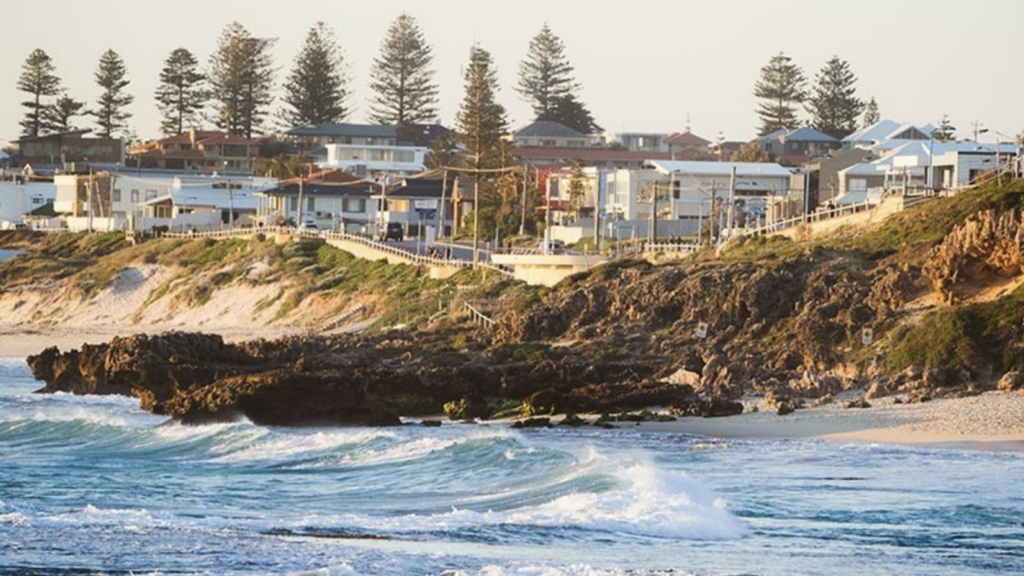SYDNEY MELBOURNE INVESTORS TARGETING PERTH
21/11/2023
With Perth property price growth widely tipped to exceed 10 per cent in 2024, Sydney and other interstate and international investors are finding the temptation irresistible and flocking to Perth real estate.

Sydney, Melbourne and overseas buyers are setting their sights on Perth’s property market, which is widely anticipated to rise by another 10 per cent or more in 2024 after doing the same in 2023.
Properties are selling at a record pace in the West Australian capital, with a median selling time of a lightning quick eight days.
That’s twice as fast as this time last year and is being driven by a chronic shortage of properties on the market.
There were 5,011 listings on www.reiwa.com at the end of October, a 2.7 per cent increase on the 30-year low recorded in September, but 37.4 per cent lower than the same time last year.
Perth is also leading the charge nationally when it comes to property price growth.
While residential property values across Australia experienced a 0.9 per cent increase in October, Perth comfortably exceeded that (1.6 per cent), ahead of Brisbane (1.4 per cent) and Adelaide (1.3 per cent).
The Perth property market’s growth has been steady too, with dwellings rising in value by 4.6 per cent over the past quarter and 10.8 per cent over the past year, which is the strongest annual rise in the nation.
South or north of the river? Perth’s great property debate finally settled
Perth’s Swan River brings people together to enjoy its beauty and recreational joys yet is also a source of never-ending competitiveness, but when it comes to property investment prospects there’s one clear winner.
Delivering an Australian property market update in Hong Kong, Steve Douglas, Chairman of SMATS Group and Managing Director of Australasian Taxation Services and aussieproperty.com, said Western Australia’s population growth rate of 2.3 per cent since December last year was the highest in the nation and was driving property prices higher and quicker than anywhere else in the country.
“It’s different to past booms such as the early to mid-2000s in that it isn’t necessarily driven by the resources sector,” Mr Douglas said.
“The economy is strong but the city’s relative affordability is making it increasingly attractive for interstate investors and migrants looking for solid rent yields or, if they’re moving, an unmatched lifestyle that is making people choose WA over other states.”
Mr Douglas added that downsizing retirees were also behind a significant portion of the current growth cycle.
“The biggest thing happening in Australia at the moment is that there is a load of people downsizing in high-pried places like Sydney, in particular, and when they sell the home they have lived in there is no capital gains tax.
“That is creating a wave of Baby Boomer cash buyers undeterred by high interest rates moving to lifestyle-rich and more affordable cities such as Perth to enjoy their retirement.”
Buyers and agents alike are reporting a ‘feeding frenzy’ that is seeing properties advertised for $800,000 going for $100,000 or more extra.
Julie Kelley, Global Sales and Marketing Manager for aussieproperty.com, said the market is moving quickly with it intensifying markedly in just the last six weeks.
“I expect Perth property prices to exceed double-digit growth in 2024.
“We have already seen increases of 5 per cent or more in many Perth suburbs in less than two months, listings are massively down and dwelling approvals remain at decade-low levels, meaning stock availability is a real issue.”
The suburbs that saw the most growth in October were Mosman Park (up 3.8 per cent to $1,910,000), South Perth (up 2.7 per cent to $1,875,000), Manning (up 2.7 per cent to $945,000), Spearwood (up 2.7 per cent to $575,000) and Cooloongup (up 2.5 per cent to $458,500), according to REIWA.
The appeal of Perth to Sydney buyers has a strong financial logic behind it.
Portion of income required to meet home payments

The average Western Australian family contributes 35.0 per cent of their income towards mortgage repayments, compared to homeowners in New South Wales spending 56.0 per cent of their family earnings on mortgage payments.
FOMO taking grip as buyers compete
Backing up the sense of FOMO emerging in the Perth market, API Magazine spoke to a prospective buyer at a home open in Perth’s southern suburbs who spoke of the difficulty of picking up a property in the current market.
“I’ve been to more than a dozen home opens and put several offers in tens of thousands of dollars above the asking price and not gotten anything,” Keith Ashley of Hocking said.
“Agents have told me that in suburbs along the corridor to be linked by the new Thornlie to Cockburn rail line, such as Canning Vale and Jandakot, they have interstate buyers on standby ready to buy anything that becomes available before it goes to market.”
Ms Kelley said there had been an enormous increase of interstate interest in Perth real estate, particularly from Sydney and Melbourne.
“We have also seen a record level of interstate migration.
“Given Perth’s vacancy rate of 0.7 per cent and the difficulty in securing rental properties, so many cashed up eastern states migrants are looking to purchase, although off-the-plan developments haven’t been as popular over the past year due to the risk factors associated with the current state of the building and construction industry.”
“Ultimately, gross rental yields in excess of 5 per cent combined with a high likelihood of significant capital growth are proving too good to resist for interstate, as well as Asian and expatriate, buyers,” she said.
The vacancy rate in Perth has been below 1 per cent since August 2022, and shows no sign of changing in the short term.
Landlords nationally expanding their horizons
New research indicates the distance between where landlords live and where they invest almost doubled in the past year.
Mike Mortlock, Managing Director, MCG Quantity Surveyors, said his company’s latest analysis of their client data showed the average distance between where landlords live and where they invest has reached a staggering 1,502 kilometres to date in 2023. This year’s outcome is a near doubling of the same analysis in 2022, which showed an average of 857 kilometres between a landlord’s home and investment.
He said the rise of Western Australia on property investors’ collective radar was the main catalyst and cited regulatory measures in some other states as one of the propellants.
“Western Australia has become the centre of Australian property investment – there’s little doubt its popularity with real estate buyers from the east coast has increased the gap between home and investment.”
“WA is now considered among the nation’s most investor-friendly jurisdictions.
“Price is a factor too as some big capital city markets are now beyond the reach of everyday buyers but there remains a raft of ill-conceived legislative moves among east-coast political parties that is playing to Western Australia’s advantage.
“Talk among investors is that tenancy legislation, compliance costs and increased tax burdens in our most populous states are forcing their hand when deciding where to purchase or build an asset.”

